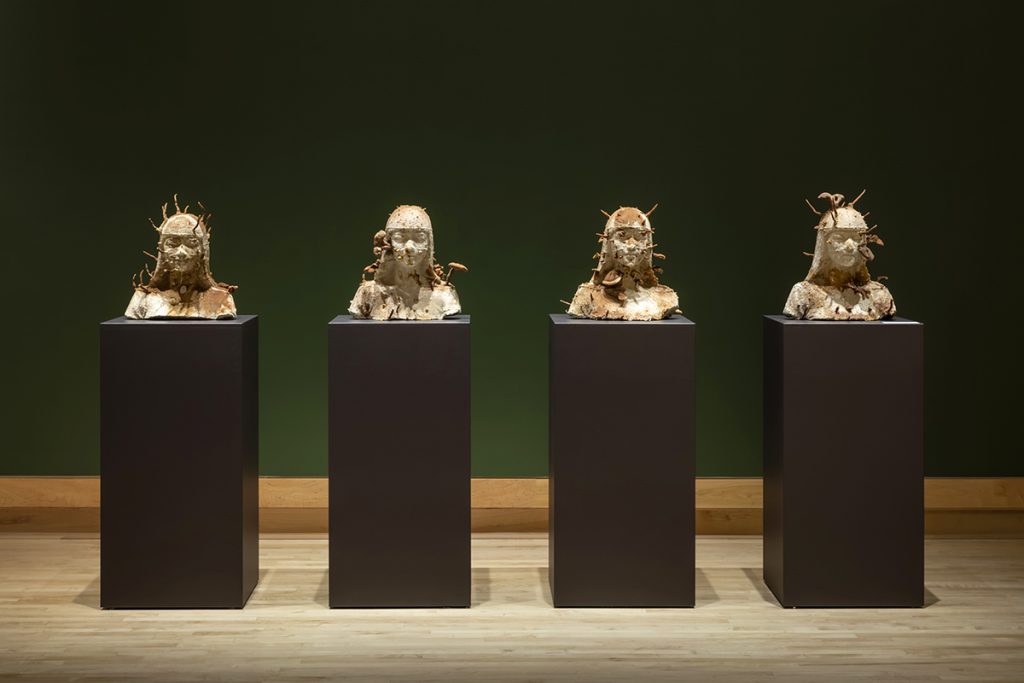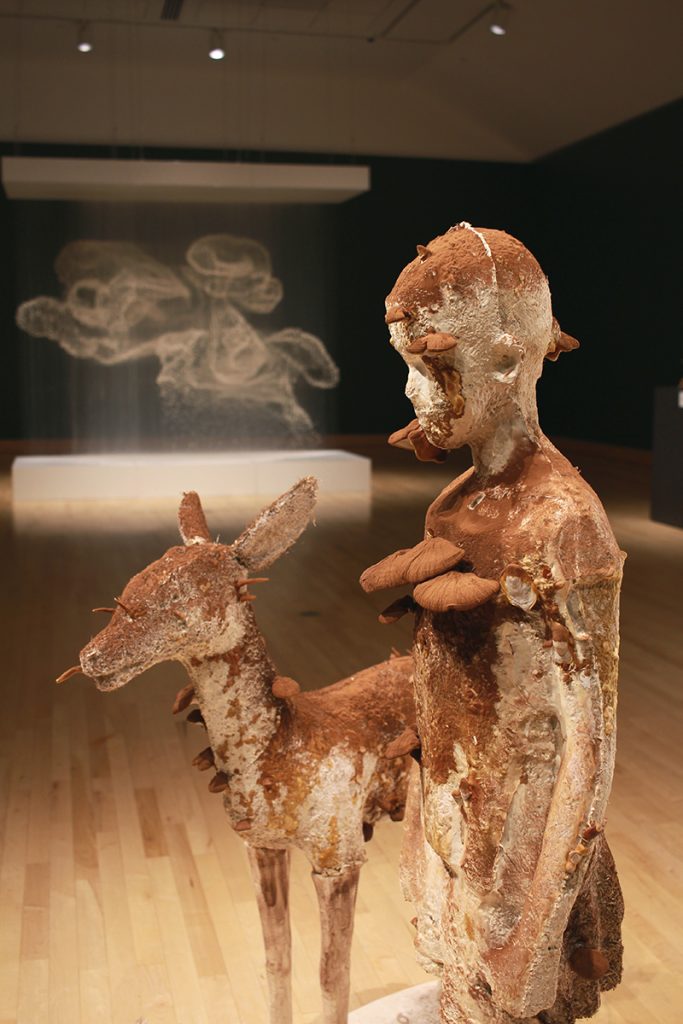Name: Xiaojing Yan
Which came first in your life, the science or the art?
I have loved both art and science since I was a little girl. When I was asked about what I wanted to be when I grew up, my answer was scientist and artist, though I was never close to being a scientist. Science and art both fascinate me. Being an artist provides me the chance to explore science.

Which sciences relate to your art practice?
My approach to science in my work is very diverse. It is based on my interests in certain topics, and one of them is mycology.
I’m fascinated by the way technological advancements give humans the illusion of power over nature. I play with a range of collaborations between the human element and the natural element by designing a controlled, human environment that, over time, gives way to an organic process.
When I create my lingzhi sculptures, I first put woodchips and lingzhi spore mixtures into the mold I create. Then, by controlling humidity, temperature, and light, lingzhi mycelium starts to grow. Once the lingzhi mycelium binds the wood chips into the mold’s shape, I remove the mold and put the bonded mixture into a small greenhouse to let it keep growing. After a few weeks, the body of the roots begins to grow and creates its own transformative sculpture. The beginning of this hybrid science/art/idiosyncratic/secular experiment satisfies me. I am no longer in control, nature is. For me, it’s important that each side of this equation has a chance to shine.

What materials do you use to create your artwork?
I often start with materials rich in physical qualities (pine needles, pearls, lingzhi mushrooms, cicada exuviate, etc.), which also emanate religious, mythological, and cultural connotations. Then I reinvent these within a contemporary aesthetic and presentation. I’m currently focusing on how nature, an inherent force within traditional Chinese art, transcends culture.
“I’m currently focusing on how nature, an inherent force within traditional Chinese art, transcends culture.”
Xiaojing Yan
In Spirit Cloud, I used over 33,000 freshwater pearls to create a large, oscillating shape that references both clouds and the Chinese lingzhi mushrooms. In Mountain of Pines, the hazy, mountain shapes famous in Chinese landscape paintings emerged as I wove thousands of pine needles through sheets of gauze. And if you looked closely at Song of the Cicada, where my suspended staircase links this world to the next, you’d see the structure is made up of hundreds of cicada exuviate dipped in gold. This freedom of imagination lets me re-invent my bi-cultural identity that is infused my earlier work.
Which scientists and/or artists inspire and/or have influenced you?
I like to look up to artists and writers who have a multicultural background, perhaps because we share a similar experience. In a world marked by hybridity and diversity, multiple viewpoints are generated which enrich our lives. I also like to look into artists who use materials in an inventive way or who explore an idea from a new perspective. But I have never been influenced by a single artist, and I have been more interested in other things from different fields rather than only art.
There are so many great artists that make fantastic work. Wolfgang Laib is one of the artists I have been interested in. I like how he works with pollen, bee’s wax, and other natural elements, and also his meditative work process. Anicka Yi’s work talks about biology, philosophy, and how art can lead to scientific innovation. There are too many to mention.

Artwork/Exhibition you are most proud of:
The recent solo exhibitions I’m holding at Suzhou Museum, Hermès Maison in Shanghai, Varley Art Gallery, Richmond Art Gallery, etc.
However, it’s hard to say which work I like the most. Usually, when I finish a piece, I am happy with the things I resolved and unsatisfied with certain things that I wasn’t able to resolve. And that’s what keeps me going. I always hope the next project will be the one I am most proud of. And often, one project leads me to another.
“That’s what keeps me going. I always hope the next project will be the one I am most proud of.”
Xiaojing Yan

For more by Xiaojing Yan, visit her website.
Share this Post

